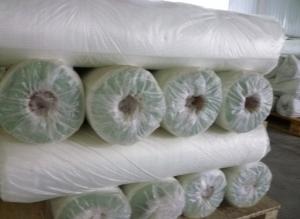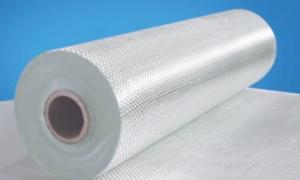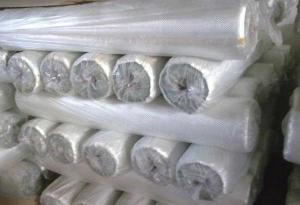E-GLASS FIBER WOVEN FABRIC
- Loading Port:
- China Main Port
- Payment Terms:
- TT or LC
- Min Order Qty:
- -
- Supply Capability:
- 400ton kg/month
OKorder Service Pledge
OKorder Financial Service
You Might Also Like
1.Brief Introduction
E-glss fiber woven roving is bidirectional fabric made by interweaving direct roving.
Woven Roving are compatible with many resin systems such as polyester, vinyl ester, epoxy and phenolic resins. Woven Roving are high-performance reinforcement widely used in hand lay-up and robot processes for the production of boats, vessels, plane and automotive parts, Pipe, furniture and sports facilities.
2.Characteristics
Top quality woven rovng fabric, E or C glass product
Woven roving fabric is bidirectional fabric made by interweaving direct roving. E-Glass Woven Roving is compatible with many resin systems such as polyester, vinyl ester, epoxy and phenolic resins. E-glass Woven Roving is a high-performance reinforcement widely used in hand lay up and robot processes for the production of boats, vessels, plane and automotive parts, furniture and sports facilities.
Product Features:
1. Warp and weft roving aligned in a parallel and flat manner, resulting in uniform tension.
2. Densely aligned fibers, resulting in high dimensional stability and making handing easy.
3. Good mold ability, fast and complete wet in resins, resulting in high productivity.
4. Good transparency and high strength of composite products.
3.Product Specifications
Items: | Warp Tex | Weft Tex | Warp Density | Woft Density | Weight | Combustible |
Ends/cm | Ends/cm | g/m2 | Content(%) | |||
WRE260 | 600 | 600 | 2.2 | 2.2 | 251-277 | 0.4-0.8 |
WRE270 | 300 | 300 | 4.6 | 4.1 | 248-274 | 0.4-0.8 |
WRE300 | 600 | 600 | 3.2 | 1.8 | 296-328 | 0.4-0.8 |
WRE360 | 600 | 900 | 3.2 | 1.8 | 336-372 | 0.4-0.8 |
WRE400A | 600 | 600 | 3.2 | 3.8 | 400-440 | 0.4-0.8 |
WRE400B | 600 | 900 | 3.2 | 2.3 | 380-420 | 0.4-0.8 |
WRE500A | 1200 | 1200 | 2.2 | 2.0 | 475-525 | 0.4-0.8 |
WRE500B | 1200 | 1750 | 2.0 | 1.6 | 495-545 | 0.4-0.8 |
WRE500T | 1200 | 1200 | 2.2 | 2.2 | 500-554 | 0.4-0.8 |
WRE550 | 1530 | 1200 | 2.0 | 2.0 | 520-570 | 0.4-0.8 |
WRE580 | 1200 | 1200 | 2.6 | 2.2 | 550-610 | 0.4-0.8 |
WRE600B | 2200 | 1200 | 2.0 | 1.6 | 600-664 | 0.4-0.8 |
WRE600C | 1290 | 1290 | 2.8 | 2.0 | 588-650 | 0.4-0.8 |
WRE600D | 1530 | 1530 | 2.0 | 2.0 | 580-642 | 0.4-0.8 |
WRE800A | 1200*2 | 1200*2 | 2.0 | 1.5 | 800-880 | 0.4-0.8 |
WRE800B | 2400 | 2400 | 2.0 | 1.6 | 820-908 | 0.4-0.8 |
WRE800C | 1750 | 1750 | 2.8 | 2.0 | 800-880 | 0.4-0.8 |
WRE800D | 1200*2 | 1530*2 | 2.0 | 1.2 | 806-890 | 0.4-0.8 |
WRE800T | 2400 | 1750 | 2.0 | 2.0 | 790-870 | 0.4-0.8 |
WRE1200A | 4000*2 | 4400 | 0.8 | 1.4 | 1190-1320 | 0.4-0.8 |
WRE1200B | 2400*2 | 2400*2 | 1.4 | 1.2 | 1190-1310 | 0.4-0.8 |
4.FAQ
Packaging & Delivery
Packaging Details: | Poly bag, then loading into carton box |
Delivery Detail: | 20 days after confirm order |
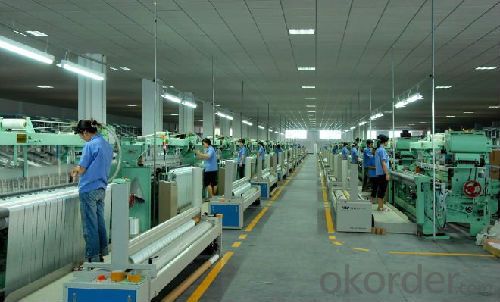
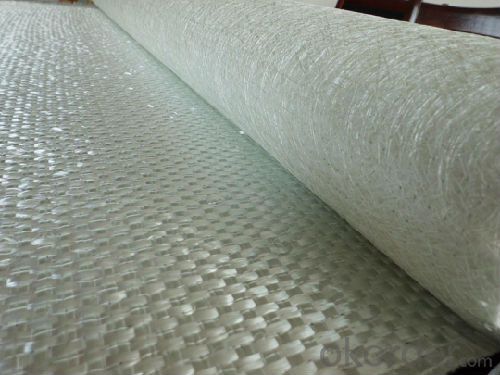
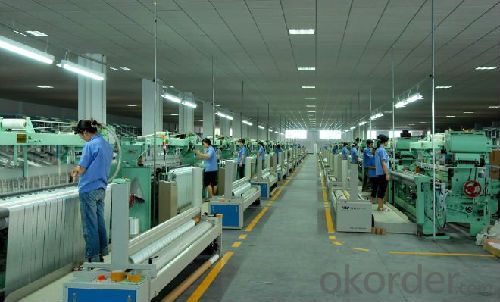
- Q:Is fiberglass fabric suitable for making protective clothing?
- Yes, fiberglass fabric is suitable for making protective clothing. Fiberglass fabric is known for its excellent heat resistance and flame retardant properties, making it an ideal choice for protective clothing in industries where workers are exposed to high temperatures, sparks, and flames. The fabric is also lightweight and durable, providing comfort and long-lasting protection. Furthermore, fiberglass fabric has good insulation properties, protecting the wearer from extreme cold or hot environments. It is also resistant to chemicals, making it suitable for use in industries where workers are exposed to hazardous substances. However, it is important to note that fiberglass fabric can irritate the skin and cause respiratory issues if not properly handled or sealed, so proper precautions should be taken when working with this material.
- Q:How does fiberglass fabric perform in terms of sound absorption?
- Fiberglass fabric is widely recognized for its excellent sound absorption properties. Due to its unique composition and structure, fiberglass fabric effectively absorbs sound waves, reducing echoes and reverberations in a given space. The fabric's density and porous nature allow it to trap and dissipate sound energy, preventing it from bouncing back into the room. This makes fiberglass fabric a popular choice for soundproofing applications in various industries, including recording studios, theaters, and commercial buildings. Additionally, fiberglass fabric can be used in wall panels, acoustic curtains, and other sound-absorbing products to enhance the overall acoustic performance of a space. Overall, fiberglass fabric is highly regarded for its ability to absorb sound, contributing to improved sound quality and reduced noise levels in a given environment.
- Q:How does fiberglass fabric perform in shear strength?
- Fiberglass fabric exhibits outstanding performance in terms of shear strength. Its composition, consisting of intertwined glass fibers, grants it a remarkable ability to resist forces applied parallel to its surface. The interlocking fibers form a robust and inflexible structure, enabling it to withstand shear stresses and prevent any deformations or failures. Consequently, fiberglass fabric is highly suitable for applications where shear strength plays a crucial role, such as in the creation of lightweight, high-strength composites, the reinforcement of concrete, and the manufacturing of various industrial goods. Furthermore, the shear strength of fiberglass fabric remains largely unaffected by exposure to moisture, chemicals, or high temperatures, ensuring its durability and reliability across a wide range of applications.
- Q:Can fiberglass fabrics be used for insulation purposes?
- Yes, fiberglass fabrics can be used for insulation purposes.
- Q:How is fiberglass fabric used in the production of electrical insulation tapes?
- Fiberglass fabric is used in the production of electrical insulation tapes because it has excellent electrical insulation properties and heat resistance. It is often used as a base material in these tapes to provide a protective layer that helps prevent electrical current from escaping or causing short circuits. Fiberglass fabric also adds strength and durability to the tape, allowing it to withstand high temperatures and harsh environments.
- Q:Does the fiberglass fabric smell at high temperatures?
- The glass fiber cloth does not smell at high temperature, but the temperature should not reach 800 degrees, I have done experiments (glass fiber rope) in a muffle furnace in 500 degrees for 24 hours, the rope is easily broken, temperature resistant glass fiber is at 500 degrees.
- Q:How does the weave pattern affect the strength of fiberglass fabric?
- The weave pattern of fiberglass fabric plays a crucial role in determining its strength. The weave pattern refers to how the individual fiberglass strands are interlaced with each other during the manufacturing process. There are several common weave patterns used for fiberglass fabric, including plain weave, twill weave, and satin weave. The plain weave pattern is the simplest and most common. It consists of an over-under pattern where each strand alternates over and under the adjacent strands. This weave pattern provides good strength and stability in both the warp and weft directions, making it suitable for a wide range of applications. Twill weave pattern is characterized by a diagonal pattern formed by the interlacing of the strands. This pattern provides better drapability and flexibility compared to plain weave. Twill weave offers enhanced strength and durability, particularly in the direction of the diagonal weave. It is commonly used in applications that require better resistance against wear and tear. Satin weave pattern is the most complex and intricate. It involves a series of floating warp or weft strands that pass over several adjacent strands before interlacing again. Satin weave provides a smooth and lustrous surface, making it ideal for applications that require an aesthetic finish. However, it sacrifices some strength and stability compared to plain or twill weaves. In summary, the weave pattern of fiberglass fabric significantly affects its strength. While plain weave offers good overall strength, twill weave enhances durability and resistance to wear and tear. Satin weave sacrifices some strength for a smoother surface and improved aesthetics. The choice of weave pattern depends on the specific requirements of the application, balancing factors such as strength, flexibility, and appearance.
- Q:Is fiberglass fabric suitable for use in medical dressings?
- Fiberglass fabric is indeed appropriate for use in medical dressings. It possesses numerous characteristics that render it perfect for this purpose. Firstly, its high durability and strength offer exceptional support and protection to wounds or injuries. Additionally, it resists tears and punctures, ensuring the dressing remains intact even when in motion. Furthermore, fiberglass fabric is lightweight and breathable, allowing the passage of air and moisture, which aids in healing and prevents infections. Moreover, it is non-absorbent, meaning it does not retain moisture, thereby preventing the dressing from becoming damp or uncomfortable. Furthermore, fiberglass fabric is hypoallergenic, reducing the likelihood of allergic reactions in patients with sensitive skin. Overall, these qualities make fiberglass fabric an appropriate option for medical dressings as it provides the necessary protection and support while ensuring comfort and promoting healing.
- Q:How is fiberglass fabric used in the production of boat hulls?
- Fiberglass fabric is extensively used in the production of boat hulls due to its exceptional strength, durability, and lightweight nature. It is a versatile material that is made by weaving together fine strands of glass into a fabric. This fabric is then impregnated with a resin, typically a polyester or epoxy resin, to create a solid and rigid composite structure. In boat hull production, fiberglass fabric is used as a reinforcement material. It is commonly applied in several layers, known as laminate, to form a strong and rigid hull. The fabric is first laid down on a mold or a frame in the desired shape of the boat. The resin is then applied over the fabric, saturating it completely and bonding the layers together. Once the resin cures and hardens, the fiberglass fabric becomes an integral part of the boat hull. It provides structural integrity, making the hull resistant to impacts, flexing, and water damage. The strength of the fiberglass fabric ensures that the hull can withstand the stresses and forces encountered during boating, such as waves, wind, and collisions. Moreover, fiberglass fabric offers excellent resistance to corrosion, rot, and degradation from exposure to water, making it an ideal choice for boat hulls. It is also relatively easy to shape and mold, allowing boat manufacturers to create hulls of various designs and sizes. Furthermore, fiberglass fabric can be easily repaired if damaged. If the hull suffers any cracks or punctures, it can be fixed by simply applying a new layer of fiberglass fabric and resin over the damaged area. This repair process ensures that the boat remains structurally sound and watertight. In summary, fiberglass fabric plays a crucial role in the production of boat hulls by providing strength, durability, and resistance to water damage. Its versatility and ability to be easily repaired make it a preferred choice for boat manufacturers worldwide.
- Q:Is fiberglass fabric suitable for making outdoor furniture covers?
- Yes, fiberglass fabric is suitable for making outdoor furniture covers. It is known for its durability, water resistance, and ability to withstand harsh weather conditions. Additionally, it is lightweight and easy to maintain, making it an ideal choice for protecting outdoor furniture from the elements.
1. Manufacturer Overview |
|
|---|---|
| Location | |
| Year Established | |
| Annual Output Value | |
| Main Markets | |
| Company Certifications | |
2. Manufacturer Certificates |
|
|---|---|
| a) Certification Name | |
| Range | |
| Reference | |
| Validity Period | |
3. Manufacturer Capability |
|
|---|---|
| a)Trade Capacity | |
| Nearest Port | |
| Export Percentage | |
| No.of Employees in Trade Department | |
| Language Spoken: | |
| b)Factory Information | |
| Factory Size: | |
| No. of Production Lines | |
| Contract Manufacturing | |
| Product Price Range | |
Send your message to us
E-GLASS FIBER WOVEN FABRIC
- Loading Port:
- China Main Port
- Payment Terms:
- TT or LC
- Min Order Qty:
- -
- Supply Capability:
- 400ton kg/month
OKorder Service Pledge
OKorder Financial Service
Similar products
New products
Hot products
Related keywords

